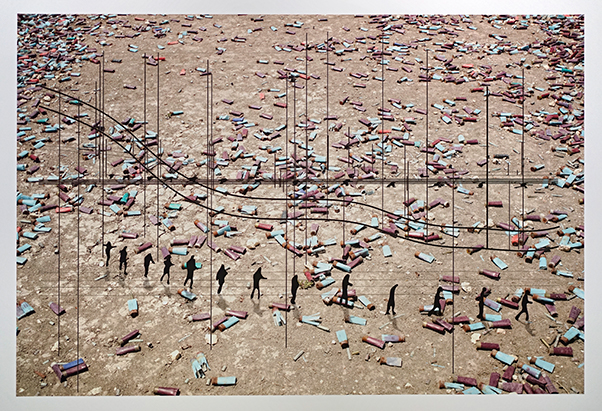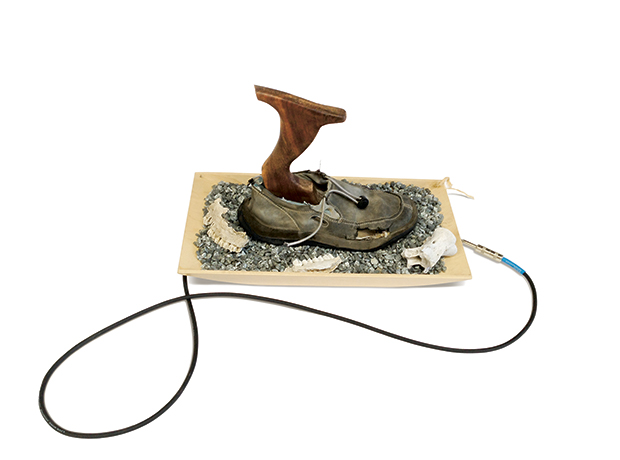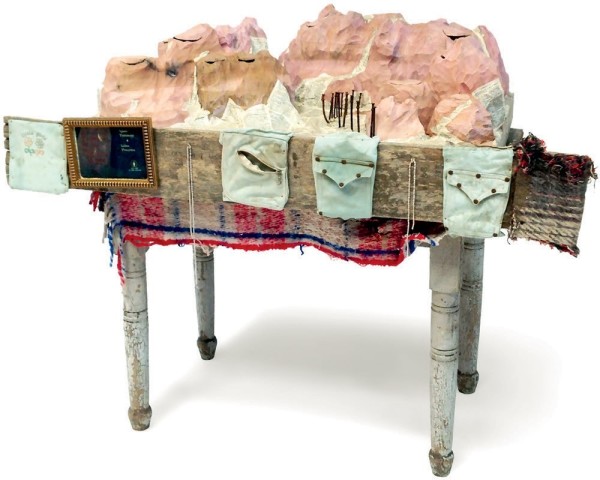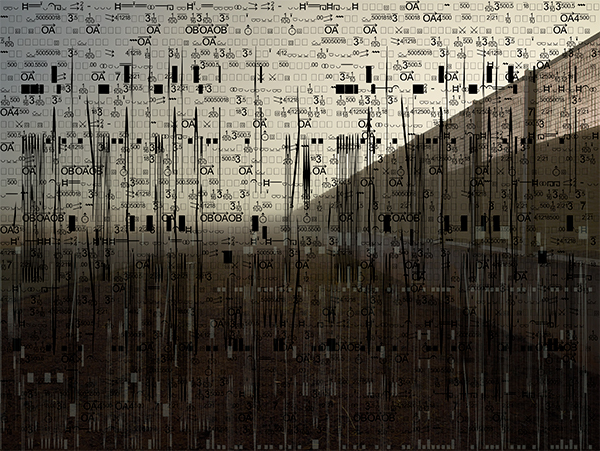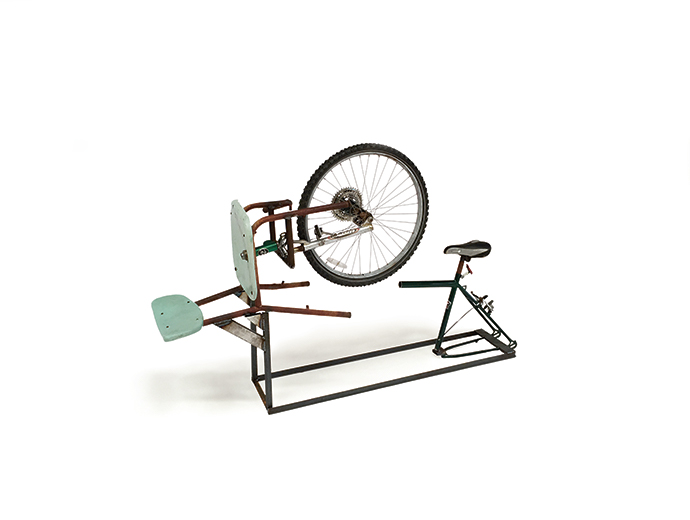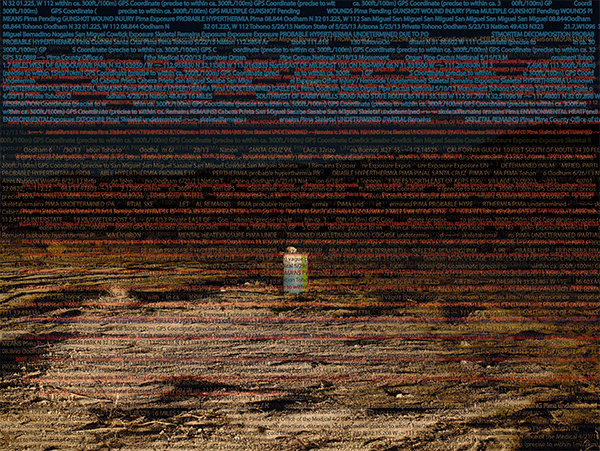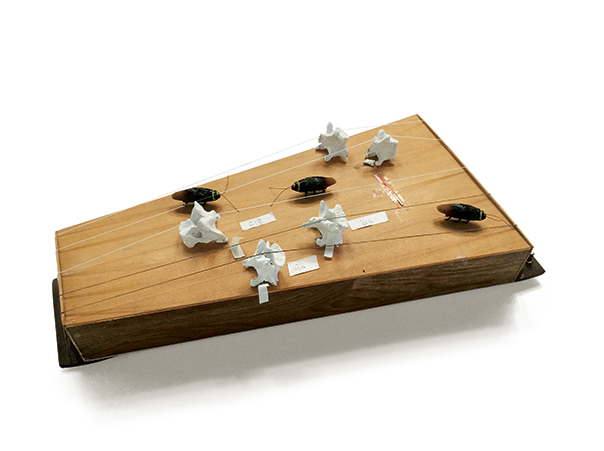Art Feature: Border Cantos
Guillermo Galindo
Since 2012, American photographer Richard Misrach and Mexican composer Guillermo Galindo have been collaborating on a project known as Border Cantos, an investigation into the material and psychic effects of increasingly militarized American interventions in the movement of Latin American immigrants across the U.S.- Mexico border.
Misrach’s photographic sequence begins with the border as a physical form, a coming-into-being of an idea as sheets of steel, or a fence, or a Normandy barrier—a patchwork, in fact—cutting through or undulating over the varied landscapes of California, Arizona, New Mexico, and Texas. Though it may look continuous, and in some cases, almost natural, Misrach reveals, too, a number of points of penetration, gaps that suggest not just pauses in construction or budget shortfalls, but alternative futures—a post- wall, open borders monument, or simply a rethinking of policy— the gap as question: Is this America? Is this humanity?
Later photos in the Cantos sequence focus on the materials of immigration, objects in situ, left behind in the dust, among rocks and cactus and barbed wire by migrants—shoes, shirts, cans and bottles, toothpaste, children’s toys, a bicycle, a piece of foam used to disguise footprints—as well as the targets, tires, and shotgun shells of the American border agents charged with capturing and deporting crossers, and in many cases also saving them from the deadly heat of the desert.
It’s from these objects that Guillermo Galindo constructs his unique instrumentation of Latin American immigration. Inspired, in part, by Mesoamerican, Buddhist, Hindu, and Afro-Caribbean traditions, Galindo’s instruments are both documents of peoples’ passing (literal and figurative) and memorials to those we may never see, who we have not yet seen, or were never meant to see. As the composer says, the instruments “enable the invisible victims of immigration to speak through their personal belongings…” tell[ing] imaginary stories about places and people that may or may not still be alive.” In this sense, they participate, too, in the colonial tradition of revering saints’ relics—objects, fragments of life, of the body, imbued in perpetuity with the spirit that once animated the possessor. Voices and acts emerge, personal and cultural histories, and perhaps, also, the hope of healing spiritual wounds.
In performance, Galindo’s objects, guided by his remarkable visual scores, produce a wonderfully strange music, an orchestration of the seeming silence of desolate places, desperate people. (In) Formed by border landscapes and environmental and quantitative data—such as the location and number of bodies found in the desert—and printed on yet more documents—altered photos of Misrach’s or flags used to mark water stations left for migrants by American humanitarian groups—Galindo’s scores extend the work of his avant-garde influences (John Cage, Iannis Xenakis, et al.), investing experimentalism with an intense spiritual and ethical rhetoric. Just as the instruments themselves confront us with true- fictional histories, the sounds they produce—played by groups or solo, by the composer, their noises looped into reverberating landscapes of loss and dread—demand a response that begins with attention, with an active imagining of those forced—by fear, suffering, prejudice—into hiding, into invisibility—with an honest recognition of our existing state of co-habitation—with a desire to hear, to see—with a desire for mercy.
Experimental composer Guillermo Galindo (born in Mexico City) has been a composer-in-residence with Guillermo Gómez- Peña’s Pocha Nostra performance art troupe and the Unbound Spirit AADP Dance Company, where he developed his practice of sonic performance art created in situ and in real time. This experience and his more recent work creating “cyber-totemic” instruments—sculptural objects embodying the pre-Colombian belief in the intimate connection between the sound of an object and the material from which it is made—produced the project Voces del Desierto, commissioned by Quinteto Latino in 2012, and his ongoing collaboration with Richard Misrach, Border Cantos. His many chamber and orchestral compositions include the symphonies Ome Acatl (premiered by the Orquesta Filarmónica de la UNAM, 1997) and Trade Routes (commissioned and premiered by the Oakland East Bay Symphony orchestra and chorus, 2006), and two major operatic works, Califas 2000 (with text and performance by Guillermo Gómez-Peña) and Decreation/Fight Cherries (with text by poet Anne Carson). Recent exhibitions of Border Cantos have taken place at the San Jose Museum of Art, in California; the Amon Carter Museum of American Art, in Fort Worth, Texas; and Crystal Bridges Museum of American Art, in Bentonville, Arkansas.
A link to the Border Cantos website, including video and audio of Guillermo Galindo performing with his cyber-totemic instruments can be found on our website: https://www.westernhumanitiesreview.com/spring16/border-cantos
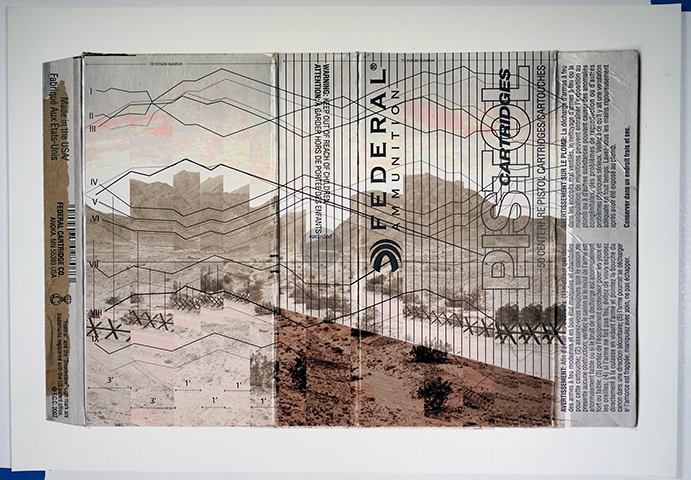
Guillermo Galindo, Horozontal Ammo Box Landscape, 2015, with permission of the artist © Guillermo Galindo


